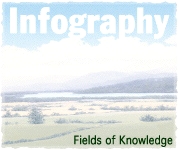
 | |
United States -- Federal Bureau of Investigation | |
The following sources are recommended by a professor whose research specialty is the FBI. |
· Athan Theoharis (ed.), The FBI: A Comprehensive Reference Guide (Oryx Press, 1998). Surveys the history of the FBI, its organization and facilities, personnel and functions, major cases and controversies, liaison relations (with attorneys general, presidents, Congress, and other intelligence agencies), portrayal in the popular media (movies, television, comic strips), selective bibliography, and chronology of key events.
· Federal Bureau of Investigation Homepage. Web site provides valuable information on FBI history, organization, field offices, and selected FBI files; in addition, other pre-processed FBI files (released under the Freedom of Information Act) can be reviewed at the FBI Reading Room at FBI Headquarters in Washington, D.C. http://www.fbi.gov/
· Frank, Donner, The Age of Surveillance: The Aims and Methods of America's Political Intelligence System (Knopf, 1985). Surveys FBI surveillance activities and methods since 1908.
· Athan Theoharis, Spying on Americans: Political Surveillance from Hoover to the Huston Plan (Temple University Press, 1978). Surveys FBI surveillance programs and methods for the period 1936-1978.
· U.S. Senate, Select Committee to Study Governmental Operations with respect to Intelligence Activities, Volume 6 Federal Bureau of Investigation (94th Congress, lst Session, 1975) and Book II Intelligence Activities and the Rights of Americans and Book III Supplementary Detailed Staff Reports on Intelligence Activities and the Rights of Americans (both 94th Congress, 2nd Session, 1976). Surveys FBI surveillance programs and procedures with hearings reprinting FBI documents as well as testimony.
· Transactional Records Access Clearinghouse (TRAC):FBI Site -- Comprehensive, Independent, and Nonpartisan Information about FBI. An invaluable source from Syracuse University, both for tracking applications for court-ordered warrants under the Foreign Intelligence Surveillance Act and for public source information about FBI investigations, indictments, and convictions. http://trac.syr.edu/tracfbi/index.html
· Athan Theoharis (ed.), The FBI: An Annotated Bibliography and Research Guide (Garland, 1994). Somewhat dated (since the volume of books and articles published on the FBI has increased since 1994) annotated bibliography identifying important books, articles, and microfilmed FBI files.
· Sanford Ungar, FBI (Atlantic-Little Brown, 1975). Somewhat dated history of the FBI, its personnel, functions, and major investigations.
· Gerald Haines and David Langbart, Unlocking the Files of the FBI: A Guide to Its Record and Classification System (Scholarly Resources, 1993). Helpful reference book that identifies the subject and contents of the FBI's file classification system.
· U.S. National Archives and Records Administration. Contains FBI records on microfilm for the period 1908-1922, a vast collection of photographs and political cartoons, and over time is acquiring FBI records to be permanently maintained. http://www.archives.gov/index.html
· Don Whitehead, The FBI Story: A Report to the People (Random, 1956). Dated history of the FBI based on privileged but restricted access to FBI records.
· Max Lowenthal, The Federal Bureau of Investigation (William Sloane, 1950). Dated history of the FBI based on accessible public records (news stories and congressional hearings and reports).
· Pat Watters and Stephen Gillers (eds.), Investigating the FBI (Doubleday, 1973). Dated collection of essays reviewing history, media relations, investigative procedures and priorities of the FBI.
· Claire B. Potter, War on Crime: Bandits, G-Men, and the Politics of Mass Culture (Rutgers University Press, 1998). Solid survey of FBI "war on crime" during the 1930s.
· Athan Theoharis (ed.), From the Secret Files of J. Edgar Hoover (Ivan Dee, 1991). Reprints sensitive FBI records pertaining to the FBI's monitoring of prominent Americans, investigative authority, and surveillance procedures.
· Kenneth O'Reilly, Hoover and the Un-Americans: The FBI, HUAC, and the Red Menace (Temple University Press, 1983). Surveys the FBI's covert, at times contentious relationship with the House Committee on Un-American Activities dating from 1938.
· Curt Gentry, J. Edgar Hoover: The Man and the Secrets (Norton, 1991). Surveys history of the FBI under directorship of J. Edgar Hoover.
· Richard Gid Powers, Secrecy and Power: The Life of J. Edgar Hoover (Free Press, 1987). Surveys history of FBI under directorship of J. Edgar Hoover.
· Athan Theoharis and John Stuart Cox, The Boss: J. Edgar Hoover and the Great American Inquisition (Temple University Press, 1988). Surveys history of the FBI under directorship of J. Edgar Hoover.
· Kenneth O'Reilly, "Racial Matters": The FBI's Secret War on Black America, 1960-1972 (Free Press, 1989). Surveys FBI surveillance of and attempts to contain civil rights leaders and organizations.
· Robert Lamphere and Tom Schachtman, The FBI-KGB War: A Special Agent's Story (Random, 1986). Surveys FBI counterintelligence investigations during the World War II and early Cold War period.
· Ellen Schrecker, Many Are the Crimes: McCarthyism in America (Little Brown, 1998). Surveys FBI surveillance of radical labor union and political activists during the early Cold War era.
· Ron Kessler, The FBI: Inside the World's Most Powerful Law Enforcement Agency (Pocket Books, 1993). Journalistic survey of major FBI investigations during the 1970s and 1980s.
· John F. Kelly and Philip K. Wearne, Tainting Evidence: Inside the Scandals of the FBI Crime Lab (Free Press, 1998). Critical survey of the FBI laboratory's procedures in major criminal cases of the 1980s and 1990s.
· John Elliff, The Reform of FBI Intelligence Operations (Princeton University Press, 1979). Briefly surveys history of FBI abusive practices and then focuses on rules instituted in mid-1970s to reform FBI operations and procedures.
· Natalie Robins, Alien Ink: The FBI's War on Freedom of Expression (Morrow, 1992). Surveys FBI monitoring of prominent writers and reporters.
· Alexander Charns, Cloak and Gavel: FBI Wiretaps, Bugs, Informers, and the Supreme Court (University of Illinois Press, 1992). Surveys FBI monitoring of the Supreme Court and Supreme Court justices.
· Mike F. Keen, Stalking the Sociological Imagination: J. Edgar Hoover's Surveillance of American Sociology (Greenwood Press, 1999). Surveys FBI surveillance of prominent sociologists.
"The Infography about the United States Federal Bureau of Investigation"
http://www.infography.com/content/693008580567.html
© 2009 Fields of Knowledge
Essex, Iowa 51638-4608 USA